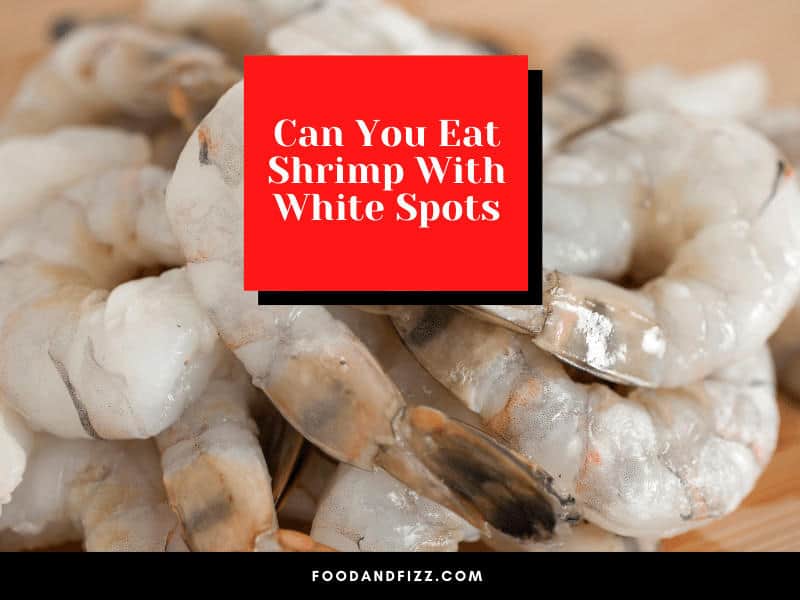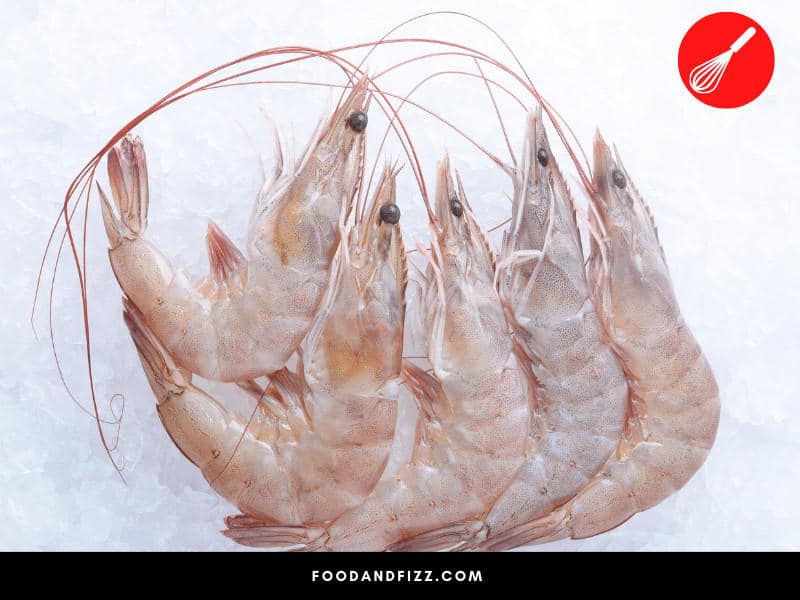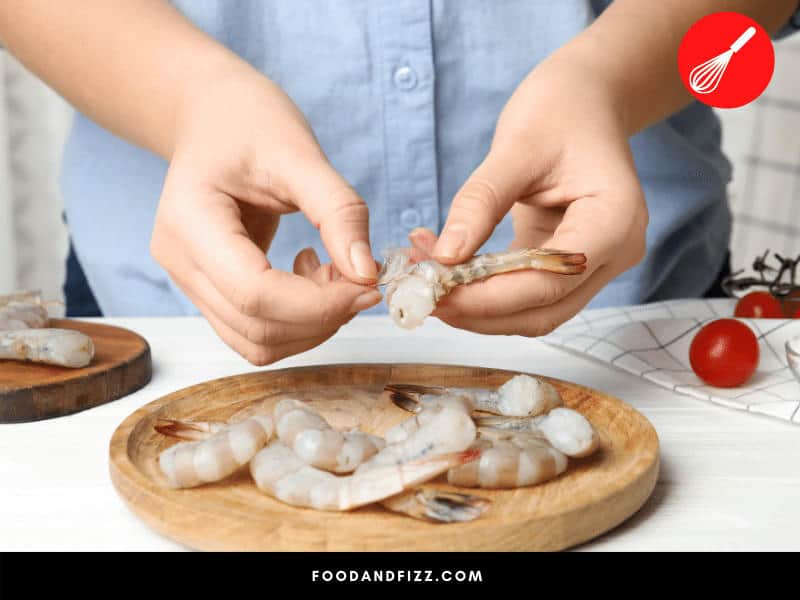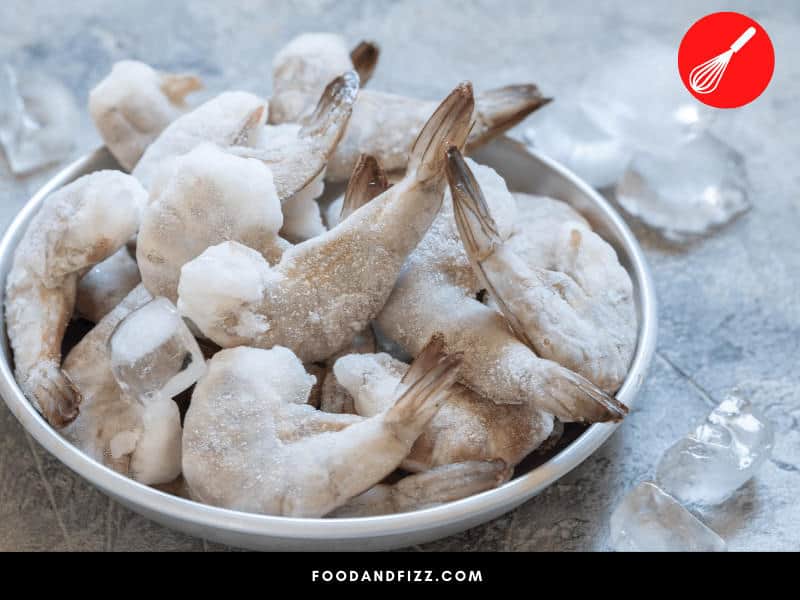Can you eat shrimp with white spots? Shrimp, of course, is shellfish. Shrimp are encased in a shell which is actually their exoskeleton meaning it protects them but is not an internal skeleton.
There are many varieties-some freshwaters and some saltwater.
Some shrimp are edible, and some are simply used to decorate and clean scum from aquariums.
Some individuals globally adore shrimp while others do not like the flavor. Some people can be allergic to shrimp even.
Shrimp is favored especially around the holidays in the USA, and as an appetizer before a larger meal. Of course, dozens of shrimp dishes as the main entrees are also popular and there are nutritional benefits to eating shrimp.
Shrimp can help maintain sexual vitality, prevent hair loss, and have heart and other organ benefits.
Vital minerals and nutrients are contained in shrimp. Even a large shrimp caught in coastal waters is mainly protein and water, low in fat, and only about 100 calories per shrimp.
Costs can be rather high though if living inland and frozen shrimp is more often seen in grocery stores rather than fresh shrimp if inland in the USA.
This can account for white spots on the shrimp if the spots are on the meat of the shrimp.
Can You Eat Shrimp With White Spots?
You can eat shrimp with white spots if the white spots are caused by freezer burn. If the white spots on shrimp are caused by the White Spot Syndrome Virus (White Spot Syndrome Virus) they should not be eaten and discarded.

White Spots and Shrimp
Like with all meats and poultry if the white spots are caused by freezer burn the shrimp are safe to eat although some flavor is lost. If the white spots are on the shell of the shrimp you need to investigate if the shrimp are safe to eat.
Global farming of shrimp outside the USA has doubled in the past decade. This is due to the different varieties Americans want, from tiger shrimp which are greyish in color to the bright red domestic shrimp. Prawns are also a favorite in some states in the USA and can be farmed.
This has led to a virus however that does affect shrimp farms and the cause remains elusive to scientists to date. Any shrimp with white spots should therefore be checked thoroughly before being cooked and eaten.
Low to high salinity (salt in water) seems to be a cause for a virus called WSSV (White Spot Syndrome Virus) in shrimp and without knowing if a white-spotted shrimp has the virus, any suspicion of white spots on the outside of the shrimp shell should make you avoid eating the shrimp. The National Institute of Health is still studying this virus in shrimp.

5 Ways to Tell if You Can Eat Shrimp with White Spots
1. Determine if the White Spots Are Only Freezer Burn
While freezer-burned shrimp will lose flavor it is not dangerous and only the flesh will have white spots. The shells might look white from the frost but there is not a spotted look to the shell.
2. Pull the Shell Off The Shrimp and Feel It
If it feels slimy or squishy then discard it. Shrimp flesh should feel solid and bounce back when pressed. Hold a shrimp in your fingers by the tail and wiggle it. It should not flop back and forth.

3. Smell the Shrimp
Healthy shrimp meat has absolutely no smell at all or if they do a mild iodine odor. If you notice a fishy or even rotted odor there is no way it should be eaten. All fish including shrimp and other shellfish should not smell overly “fishy.”
4. Check the Expiration Date of the Shrimp
It should be posted on the bag of shrimp, even on frozen shrimp where it will state a “Use By” date. If way over the expiration date you are risking illness. Fresh shrimp should be either used within 4 days or frozen when you return from shopping.
Shrimp can be held for up to 5 months safely if frozen. The longer you hold shrimp frozen though, the greater the instance of freezer burn. There is also a stamp that a shrimp farm is safe and passed regulations in the USA. Look for this also on the bag.
5. Pour Cold Water Over Frozen Shrimp
This not only defrosts the shrimp but shows white spots on the shell which can indicate the presence of a virus. There is no need to thaw frozen shrimp for days as running cold water over frozen shrimp can defrost them in mere minutes.
Shrimp start to deteriorate rapidly after defrosting so waiting until you plan to eat your shrimp before defrosting is a safe way to avoid spoilage.
Most reputable food sites and scientific sites do recommend defrosting as needed in a colander using cold water, rather than in the refrigerator.

What Color Should Shrimp Be?
Healthy shrimp for consumption in the USA have either reddish-colored shells or grey-colored shells. The grey-colored shells are tiger shrimp and not as common but still eaten in the US.
The US Department of Commerce monitors tiger shrimp quite a bit as they can be farmed in coastal waters in other countries in Eastern Asia for the most part.
The meat of the shrimp should be white without any yellow tinges which indicate spoilage also. Not only unappetizing to look at but yellowed shrimp is spoiled and can lead to illness.

If Shrimp Tastes Bad, Should I Keep Eating it?
No. Shrimp has a mild sweet taste and any other flavors your mouth picks up should alert you that the shrimp is spoiled. Any aftertastes should also be noted and brininess should never be tasted.
Shrimp should be cooked thoroughly and medical advisors in the USA warn against eating raw shrimp. Any brininess and ammonia taste means the shrimp is not cooked through as chlorine and ammonia are used to clean the shrimp when they are caught.
Are Prawns The Same As Shrimp?
Not at all. They look different and taste different and have very little meat in them. Although popular in some parts of the USA they are not wildly sought out and different methods of handling and cooking exist.
Prawns can be chewier and the head remains on while being eaten with the flesh being sucked out.
Can I Eat Shrimp with the Vein in the Back Intact?
Yes, you can but that is really the digestive tract and contains the shrimp excrement. Most individuals prefer to remove this or purchase shrimp where it is removed.
“Peel and eat” shrimp at buffets usually have this black vein intact. Some people refer to the black vein as the “poop shoot.”
Conclusion to Can You Eat Shrimp With White Spots
It really depends on where the white spots appear. If on the meat after freezing, they are generally from freezer burn. If the spots are on the shell it can be a virus.
The scientific community is still investigating viruses in shrimp and it is difficult to tell when shrimp is bad.
Purchasing from a reputable vendor is advised as buying seafood online, especially from non-food sites can be dangerous. And yes, this DOES happen!
Ensuring that you cook in batches as needed helps to cut down on spoilage while keeping shrimp frozen until use. Any shellfish that seems suspicious should be tossed out.
Frequently Asked Questions Can You Eat Shrimp With White Spots
What Color Should Shrimp Be?
Healthy shrimp for consumption in the USA have either reddish-colored shells or grey-colored shells. The meat of the shrimp should be white without any yellow tinges.
Can I Eat Shrimp with the Vein in the Back Intact?
You can but that is really the digestive track and contains the shrimp excrement. Most individuals prefer to remove this or purchase shrimp where it is removed.
Your health is more important than a few moments of flavor!

